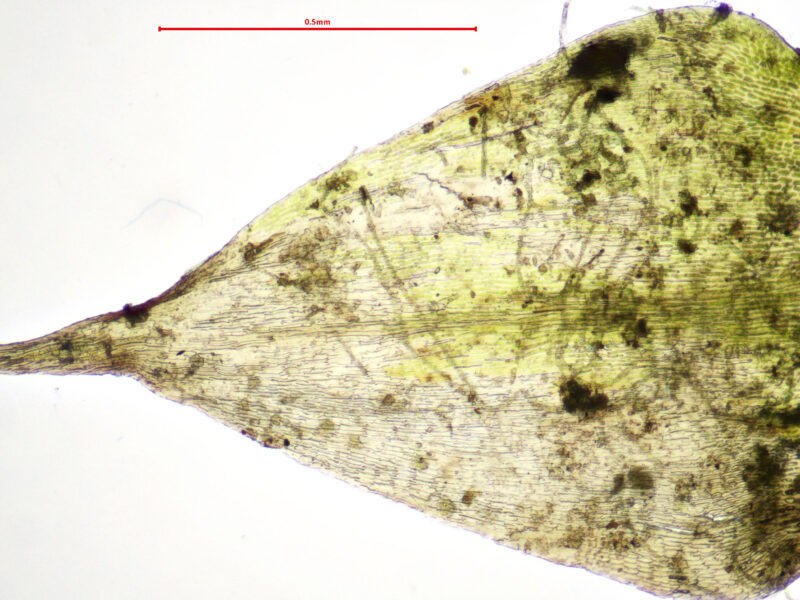Identification notes
Although this moss is restricted to one specific habitat – on boulders and tree roots in the spray zone of fast-flowing wooded western rivers and streams – care must be taken with its identification.
As the photos below show, typical I. holtii has a subtle but characteristic appearance, forming dense patches of burnished shoots close to the water level, especially in the vicinity of cascades and waterfalls. It often grows with other ravine specialists, for example Heterocladium wulfsbergii and Porella pinnata. Although the brown colouration of the shoots is a good ID character and one which helps distinguish it from I. myosuroides, riparian forms of Thamnobryum alopecurum can also be brown-tinged.
Hang on a minute – Thamnobryum alopecurum? Most familiar to bryologists as a species of base-rich woodland floor, this species has a second habitat which mirrors that of I. holtii. When it grows on boulders in places where it occasionally gets inundated or splashed, its main stem all but disappears and its growth form is more bushy than tree-like – like an Isothecium in fact. It is always worth getting in the habit of checking the leaf tips of candidate I. holtii with a good hand-lens – you won’t be able to make out teeth (they are there, but too minute to see) whereas if you have picked up T. alopecurum you should see some coarse teeth quite easily. You could also pick off a stem leaf with your fingernail or with tweezers – the opaque alar cells of I. holtii show up as dark patches visible with a hand-lens.
Read the Field Guide account
















